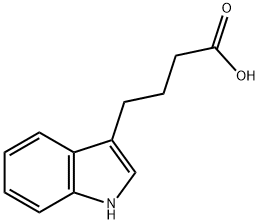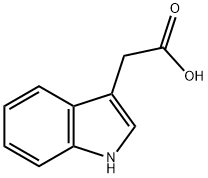A4983012
Indole , standardforGC,>99.5%(GC) , 120-72-9
Synonym(s):
1H-Benzo[b]pyrrole;2,3-Benzopyrrole;Indole
CAS NO.:120-72-9
Empirical Formula: C8H7N
Molecular Weight: 117.15
MDL number: MFCD00005607
EINECS: 204-420-7
| Pack Size | Price | Stock | Quantity |
| 5G | RMB47.20 | In Stock |
|
| others | Enquire |
Update time: 2022-07-08
PRODUCT Properties
| Melting point: | 51-54 °C (lit.) |
| Boiling point: | 253-254 °C (lit.) |
| Density | 1.22 |
| bulk density | 230kg/m3 |
| vapor pressure | 0.016 hPa (25 °C) |
| refractive index | 1.6300 |
| FEMA | 2593 | INDOLE |
| Flash point: | >230 °F |
| storage temp. | 2-8°C |
| solubility | methanol: 0.1 g/mL, clear |
| pka | 3.17 (quoted, Sangster, 1989) |
| form | Crystalline Powder |
| color | White to slightly pink |
| PH | 5.9 (1000g/l, H2O, 20℃) |
| Odor | fecal odor, floral
in high dilution |
| Odor Threshold | 0.0003ppm |
| Odor Type | animal |
| biological source | synthetic |
| Water Solubility | 2.80 g/L (25 ºC) |
| Sensitive | Light Sensitive |
| Merck | 14,4963 |
| JECFA Number | 1301 |
| BRN | 107693 |
| Stability: | Stable, but may be light or air sensitive. Incompatible with strong oxidizing agents, iron and iron salts. |
| LogP | 2.14-2.24 |
| CAS DataBase Reference | 120-72-9(CAS DataBase Reference) |
| NIST Chemistry Reference | Indole(120-72-9) |
| EPA Substance Registry System | Indole (120-72-9) |
Description and Uses
Indole has an almost floral odor when highly purified. Otherwise, it exhibits the characteristic odor of feces. It is not very stable on exposure to light (turns red). Indole may be obtained from the 220 - 260°C boiling fraction of coal tar or by heating sodium phenylglycine-o-carboxylate with NaOH, saturating the aqueous solution of the melt with C 02, and finally reducing with sodium amalgam; can be prepared also by the reduction of indoxyl, indoxyl carboxylic acid, or indigo.
Can be used in perfumes and in the synthesis of tryptophan.
Safety
| Symbol(GHS) |   GHS06,GHS09 |
| Signal word | Danger |
| Hazard statements | H302-H311-H319-H400 |
| Precautionary statements | P264-P273-P280-P301+P312-P302+P352+P312-P305+P351+P338 |
| Hazard Codes | Xn,N,T |
| Risk Statements | 21/22-37/38-41-50/53-36-39/23/24/25-23/24/25-52/53 |
| Safety Statements | 26-36/37/39-60-61-45-36/37 |
| RIDADR | UN 2811 6.1/PG 3 |
| WGK Germany | 1 |
| RTECS | NL2450000 |
| F | 8-13 |
| TSCA | Yes |
| HS Code | 2933 99 20 |
| HazardClass | 9 |
| PackingGroup | III |
| Hazardous Substances Data | 120-72-9(Hazardous Substances Data) |
| Toxicity | LD50 orally in rats: 1 g/kg (Smyth) |



